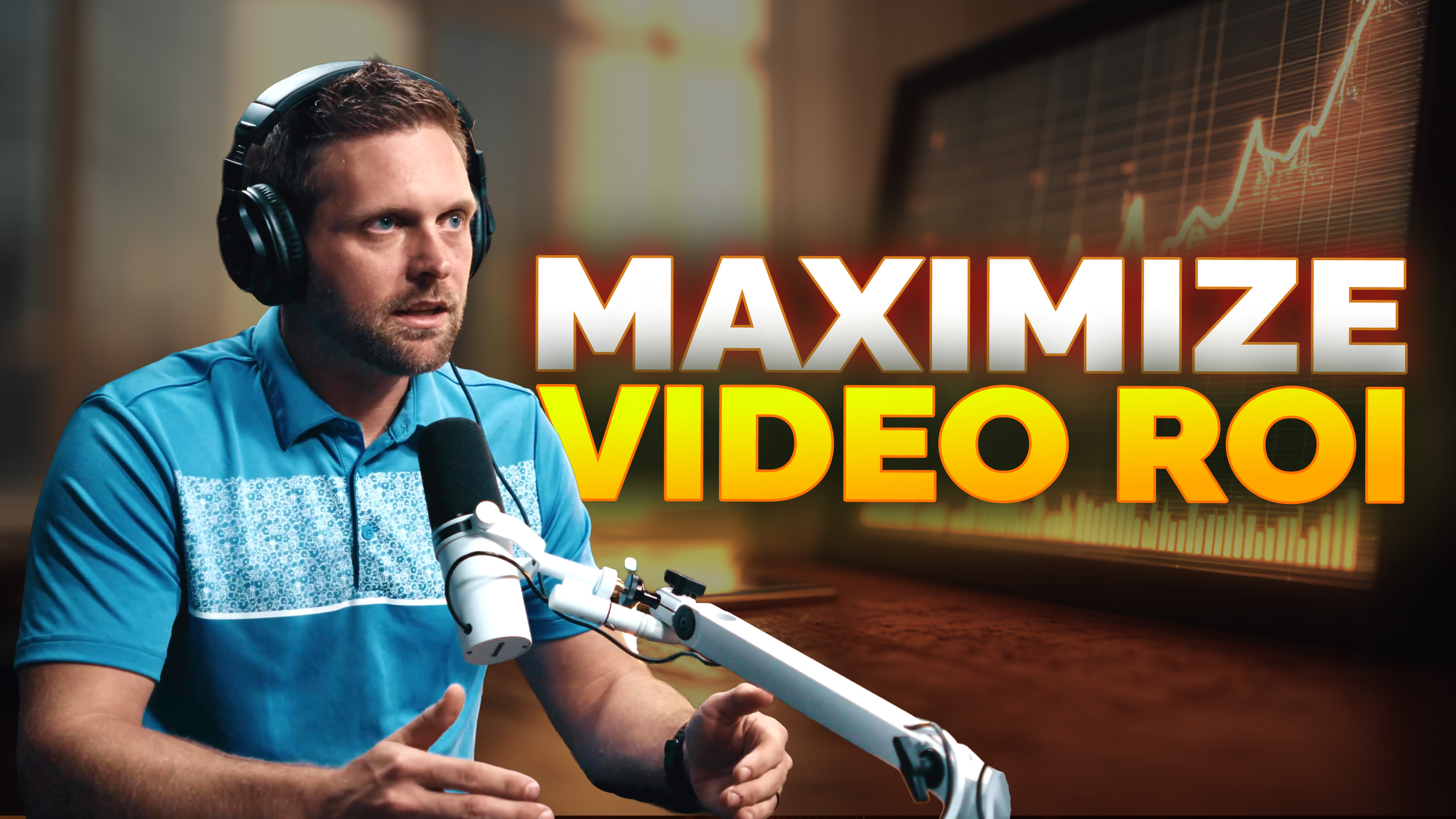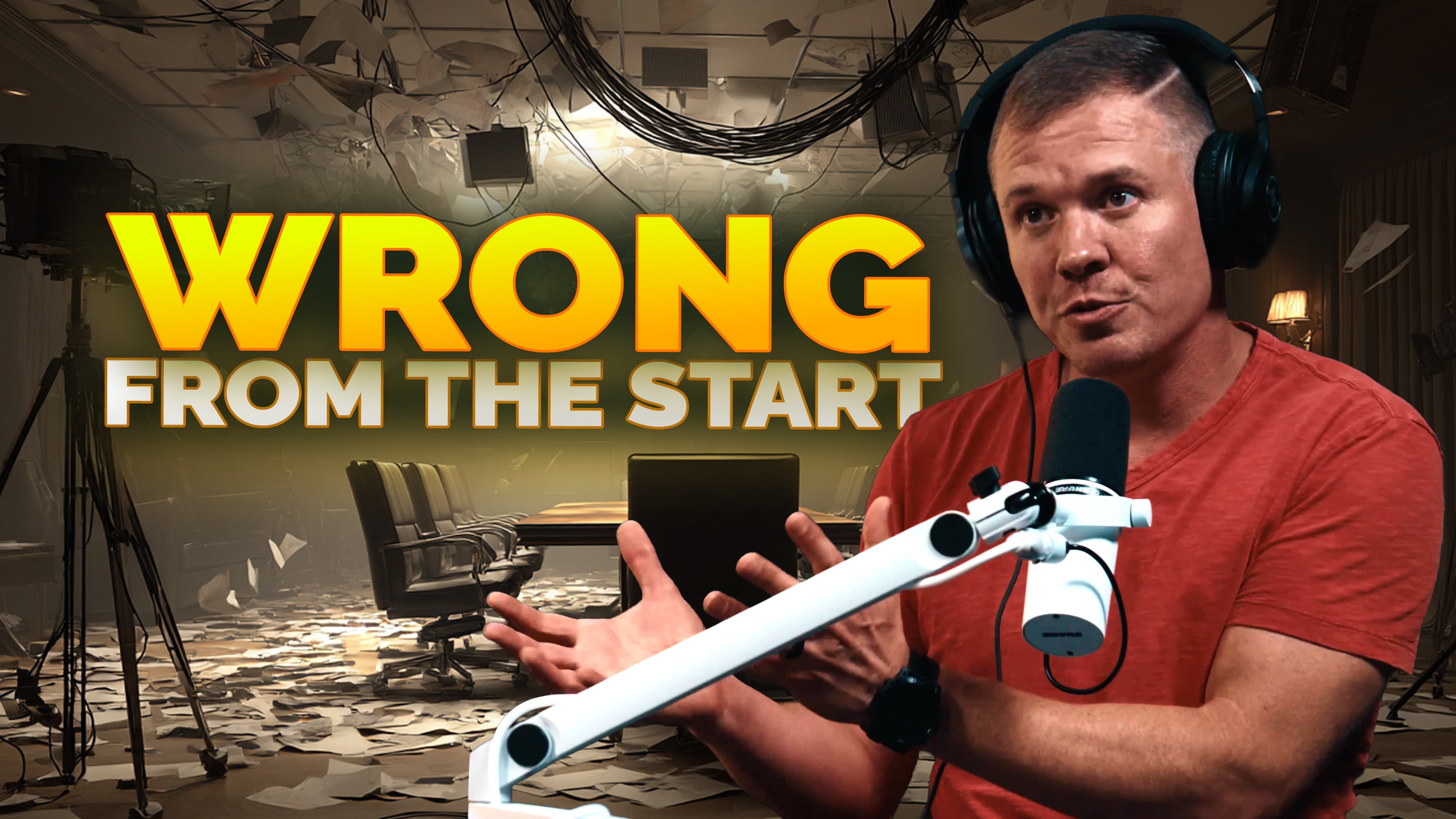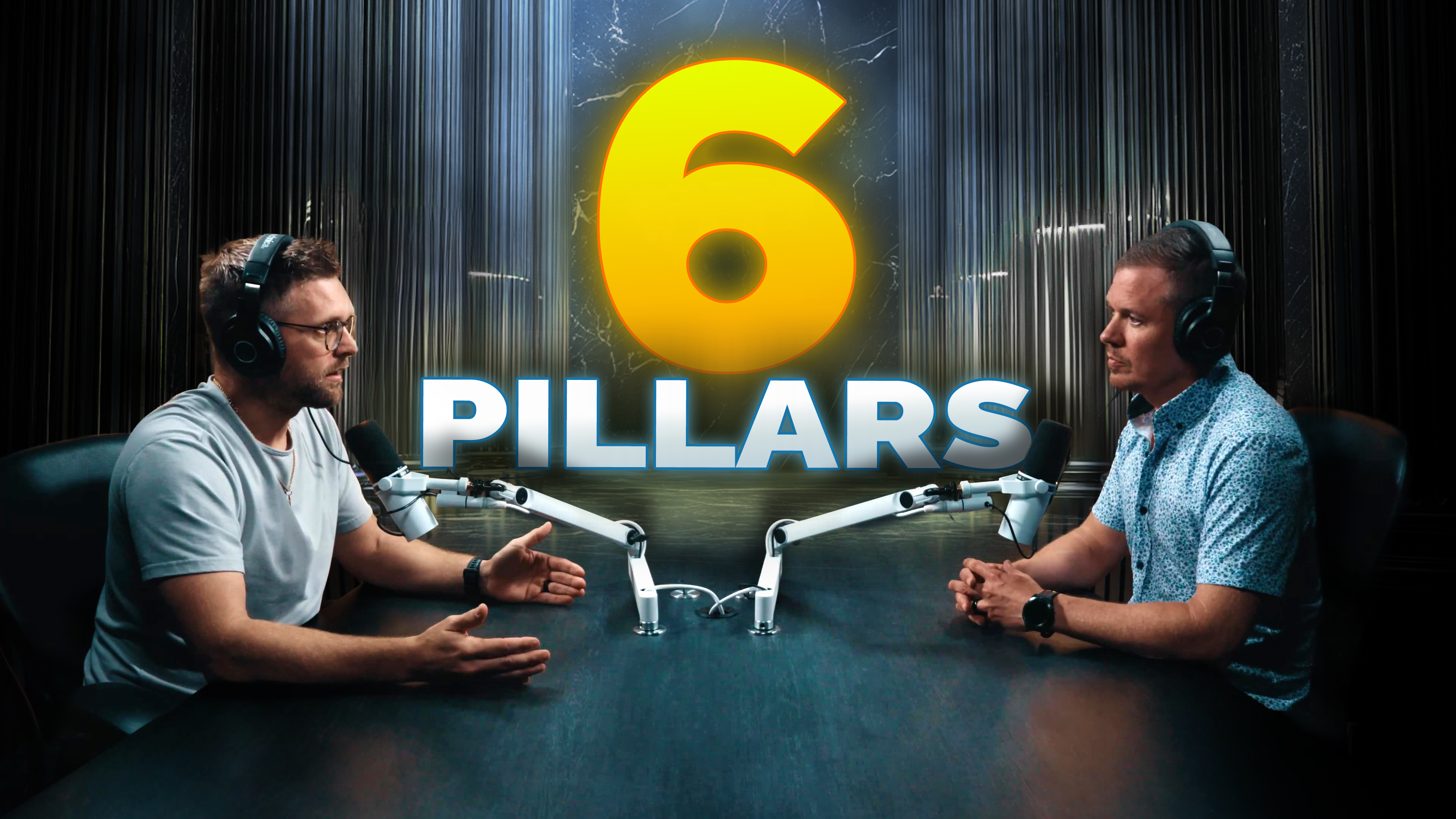
Why Your Testimonials Aren’t Enough – EP6 – Content Wars
In this episode of Content Wars, we dismantle one of the most overused, misunderstood forms of B2B content: the testimonial. Marketers are banking on 30-second “they were great” soundbites to build trust — but your audience needs more. We break down why traditional testimonials fall short, and how to turn real customer experiences into powerful, story-driven proof that actually converts.
💡 Key Takeaways:
➡️ Why most testimonials fail to create real buyer trust
➡️ The difference between case studies and case stories
➡️ How to make your customer the hero — not your product
➡️ Why storytelling builds preference better than stats
➡️ The content strategy that drives multi-million dollar deals
⏰ Timestamps:
0:00 – Testimonials vs. Case Studies: Why it matters
2:15 – The point of proof: what your audience really needs
5:45 – What’s missing from most B2B content
9:00 – Why customer stories convert better than sales decks
12:30 – How to build a repeatable library of customer stories
15:40 – Real-world results from story-driven content
Transcript
Adam Marquardt: So we oftentimes talk to clients, and being in a B2B space, one of the things they come to us with is, "Hey, we want to do a testimonial. We want to get our customer on camera. We need to get the value that we added to them extracted." And usually that falls a little bit short. But then sometimes they'll come to us and say a case study, which we can unpack in a minute. But the reality is, trying to capture the information from a customer has value and should be done in a video format. So walk me through the difference between why a case study isn't the thing, why a testimonial isn't the thing, and then what is the right thing?
Nathan Yerian: When you're talking about whether it's a testimonial or a case study, what you're really talking about is a point of validation. You're trying to communicate to your audience that you do something, that you have experience doing that thing, and that when you do it— not from your perspective, but from your customer's perspective—you do it well. That it created a change that was worth the investment of time and money they made with you.
Obviously, the goal is that other customers who look like them can be impressed or have their minds changed about the value that you offer to the market. Hopefully, the right ones end up doing business with you at some point. So that's the motivation. That's what we're up to: transferring proof that we impact our customers in a positive way. That's the goal.
Adam Marquardt: I think that's often overlooked. Just go look at most companies' websites—it's all about what we do, who we are. But to your customer, they want to know: what's the impact, what's the result, how is that going to work for me? Any time you can capture that on video and show it to your prospective customer, it's going to make a bigger impact. They're going to see you've done this before, for people that look like them, sound like them, with similar problems.
Nathan Yerian: That’s kind of the meat of it, right? So many people say, "Oh, we need to do a testimonial video." A testimonial is fine if you're doing candid content. You're at a trade show and you want to get someone's opinion real quick. Maybe something like, "What's it like to work with us?" and they say, "Oh, they're great. Very responsive." That’s good. There's nothing wrong with that. Testimonial content is great—but it's not the highest form of content.
That's not what we should be aiming at when we're talking about creating proof and instilling a different idea in our audience’s mind. Testimonials at a trade show? Candid conversations? You’re in front of a customer and they say, "Man, you guys really took care of me when X, Y and Z happened." Great. Get your phone out. Record that. Capture the moment. That’s a win. That’s overlooked by a lot of companies.
Positive things are said in conversations all the time. That can become testimonial content. And it doesn’t always have to be video. It could be, "Hey, do you mind if I write that down and add it to our website?" Or, "Would you mind leaving that as a Google review?" All of that is good and valuable.
But when you go to a video production company and say, "We want testimonials," you're leaving something on the table. That needs to be elevated from "They’re good to work with" to an actual story—something your customer can follow. Most companies limit themselves because they’re focused on a formula that is still about them. A case study is the classic: problem, solution, result. It’s about your tool and what it did.
That’s fine in academia. But in sales and marketing, you need to think differently to maximize effectiveness. Because if we make it about us—shocker—prospective customers don’t necessarily care about us yet. Who do they care about? Themselves. Their problem. Their situation.
From a content perspective, we have to make the story relevant to them so they can see the value in terms of themselves. That’s why we think beyond a case study—we turn it into a case story.
And when we say story, it’s not your company’s story. It’s not about your product. It’s about that customer, that industry, that problem, and the solution you brought—or supported in tandem with other tools—that created a change. You’re showcasing how their challenge was diminished or eliminated.
It’s difficult to not talk about yourself, your product, or your service. But we have to resist that urge. Your customer thinks you’re selling something. But if they see someone who looks like them, in their industry, maybe even a competitor, sharing a challenge that they also face—now it feels familiar. They see themselves in that story.
That’s why stories need character development. Who are we? What are we facing? What’s the impact of solving or not solving that problem? Once that’s clear, your prospect starts to think, "That’s me. I have those challenges. I want to know what happens."
What did they try before? It probably wasn’t just you. Maybe it was nothing. Maybe it was the wrong tool. Maybe they delayed. Share that journey. Because your prospect is somewhere on that same journey. The more relatable it is, the more credibility it has. And that credibility isn’t coming from you—it’s coming from a customer.
Eventually, yes, talk about how you entered the picture. Why you were evaluated. Why you won. Go through onboarding. What was the process? Implementation? How long did it take? What was the quality like?
And most importantly, how has that changed the original problem?
Now you have a complete story: problem, action, result. Not just facts. But emotion. A journey. And most importantly—it’s told by someone your prospect can relate to.
And the people you pick to tell these stories should be the customers you want to replicate. If that person represents an ideal customer—problem, situation, industry—then that story is your opportunity to create belief in a thousand other lookalike customers.
When that happens, they go from "Maybe you’re an option" to "You could actually solve my problem." And that changes everything.
Adam Marquardt: Yeah, for sure. It’s often said, "People hate to be sold to but love to buy." When a salesperson talks, people feel pushed. But when a peer shares a real experience, you let your guard down.
We actually have a client doing this now. They’re turning success stories into case stories and putting them in front of their target market. It softens the ground before sales even talks to them.
It’s powerful. Instead of saying, "We can do this and that," and the prospect thinks, "That’s too good to be true," now they see it in bite-sized, social-formatted proof. And when they talk to sales, they’re already informed. They’ve seen the process. The results. They’re primed—and more open.
Nathan Yerian: I know the client you’re talking about. I had a conversation with them recently. They used the case story in their sales process.
They had a prospect who didn’t believe them—"It’s too good to be true." Refused to waste time. Then they showed her the story. Suddenly, she was interested. She saw a real customer repeating the same things their salesperson had been saying—but in her language, from her situation.
She ended up flying to visit that customer in person to validate it. And it was all true. She became a customer. They’re at one facility now, soon to be more. Multi-million dollar contracts opened because of a single case story.
That door wouldn’t have opened without it. That client told us, "This was amazing. We closed a huge deal from a single video."
What’s even more exciting is—they’re just getting started. That was one customer in one industry. Now they’re profiling other industries and creating more case stories—one at a time.
If we keep telling these stories across all industries where they get results, it changes the game. They’ve seen the tip of the iceberg. There’s so much more opportunity by showing the impact they create.
Adam Marquardt: Absolutely. And we’re doing the same thing ourselves. We had someone reach out recently for a video. Good conversation with our sales team. But at the end, they said, "Okay, send me an email."
And in the email, we said, "Don’t take our word for it. Watch this case story." They did. And it changed everything.
The video was about a previous customer who landed a $70 million deal using video in their sales efforts. It blew them away. They didn’t think it was possible. But this was someone in their industry. In fact, one of their competitors. They said, "We know that company. We should leverage this too."
We haven’t built out stories for every industry yet—but when we can show the exact scenario that a prospect is in and let them see that story—it changes the conversation. It’s a game changer.
Nathan Yerian: Usually companies think, "We’ll get three case stories and we’re done." But if you’re trying to build proof in an industry around particular problems, you don’t want one. You want a library.
"Here’s three people like you who all came out the other side." That’s the story they’re looking for.
So don’t try to do it all at once. Sit back, ask: What industries are we targeting? What problems are we solving? What customers have we crushed it with? Build the stories over time.
Depending on the company, maybe it’s monthly, quarterly, bi-annually. But keep it alive. Don’t say, "We’ll do three and be done."
If you only serve one industry with one problem, maybe three is fine—until something changes. But if your goal is to create belief in your market, you need an ongoing initiative. Tell your customers’ stories consistently.
Adam Marquardt: And the more evidence you put into the market—the more credibility you earn over time. Even if someone’s not ready to buy today, they’ll remember you when they are.
Six months from now. A year. Eighteen months. They’ll remember: this company gets results. They’ve seen your content, heard real stories, and they know it works. You’ve planted the seed.
They won’t just shop for RFPs. They’ll say, "I know these people. I know what they’ve done. Let’s evaluate them seriously."
Nathan Yerian: It provides a different level of credibility. And for both marketing and sales—if you could only choose one thing to invest in—it would be compelling customer stories.
Stories that a prospect believes, understands, and sees themselves in.
That’s a marketing tool that’s hard to beat. And a sales tool that changes minds and closes deals.



